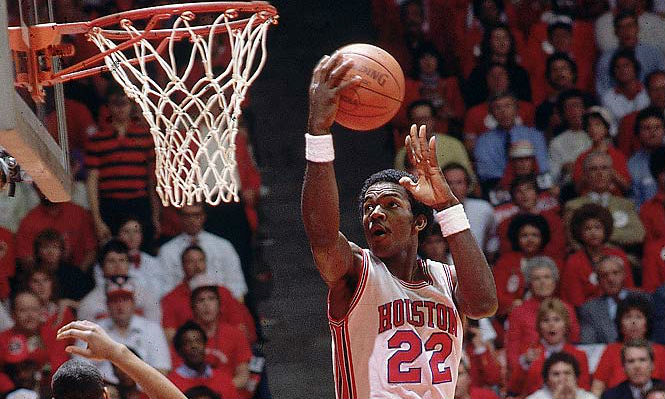There is a lot to love about the game of basketball. The dunk is something that will always get us out of our seat. Something about that extra point from behind the line is exhilarating, too. Preparing for the Final Four in an 80,000 seat stadium excites fans when you can think about college athletes on the biggest stage. There are some games that signal the moment where these aspects of the game became a major part of the sport. Each of these exciting parts of the game we love has a moment that we can point to and say, “That. That is why the game is beautiful. Thank god for that.” Of the thousands of games ever played on the hardwood, four really stand out to me.
1968 game between Houston and UCLA in the Superdome
For better or for worse, the biggest games of college basketball are played in the largest stadiums in America. We all saw this year’s national champion North Carolina Tar Heels win even though it kind of looked like the hoop shrank or the ball turned into a cube or something (They shot 35.6% and 14.8% from 3). 2011 was worse, with runner-up Butler only hitting twelve field goals, and still somehow only losing by twelve.
Regardless of the results of the game, though, there is something amazing about watching amateur athletes perform on a stage larger than the stage of their professional counterparts. The Final Four being played in stadiums meant for football can thank this 1968 game between Houston and UCLA. It was played in the Superdome of New Orleans between the two best teams, one of them being a John Wooden-coached UCLA. This practice isn’t really out of the ordinary now, with preseason games often being played in places like Jerry World, or other large arenas. But, at the time, this was quite literally game-changing (see: stats in football stadiums).
We love live sports, and that isn’t going away. Look at that picture. The court looks like something from Honey, I Shrunk the Kids. But, it still sold out. The people in the last row still cheer their faces off even though it is a similar experience as looking at an ant farm from across the room. Being there, amongst the fervor of competition and seven-dollar beers, is exactly where every sports fan wants to be. So thanks, this game, for giving us a world where we can pile into a stadium with 79,999 of our closest friends to watch the sport we love.
Ronnie Carr hits the first ever three pointer
The three-point shot has never been as important in the game of basketball as it is now. The Warriors made it a thing, the Cavs built to beat them, the Rockets built a team that started a crusade against the mid range. In c0llege it’s no different. Villanova took the National Title last year despite their widely-accepted flaw that they shoot “too many threes.”
The three-ball wasn’t always a thing, though. Until 1980, it didn’t exist in the college game. But then, in Cullowhee, North Carolina, on a cool, November day, Ronnie Carr made the first shot from behind the arc that would so soon become a major influencer of the game as a whole. Coincidentally, Carr wore number 22, which is how deep the three-point line was when it was debuted. The experiment worked with the Southern Conference, one of two conferences sanctioned by the NCAA to have a three-point line that season, finishing the year at 182 of 450 from beyond the line as a conference. This season, Savannah St. led the nation in three point attempts at 1182, making 392 of them. Yeah, the game has changed a bit.
1983 Final Four Game between Phi Slamma Jamma and Louisville
This one is my personal favorite on the list. This game has become a very popular talking point thanks to ESPN’s 30 for 30 series, which features the game two times: once in Survive and Advance, which is a god damn awesome documentary, and also in Phi Slamma Jamma. Everyone loves dunks. Even your mom that doesn’t like show-boating in any way likes a good ol’ posterization. Nothing can get a fan out of their seat like rim-shaking, earth-shattering jam from guys that defy gravity.
Humorously, there was a time when the dunk was illegal in college, which is just the most NCAA thing to do ever. Why would they do something so blatantly idiotic, you may ask. Well, in 1967, the dunk was made illegal to de-emphasize the dominance of big man Lew Alcindor. So in other words, the NCAA eliminated one of the most exciting parts of the game because they wanted to take the spotlight off of one of the greatest players in the history of the sport. That would be like last season if they were watching a UCLA game, one of the best offensive teams in the history of the sport, and instead of being amazed at the wonders of Lonzo Ball leading the Bruins in transition, they got upset by it. “No! Ban transition offense! Limit all basketball to half-court sets!”
But, I digress. In 1976-77, the dunk returned to fruition and was instituted as a major part of the game by Darrell Griffith, a.k.a. “Dr. Dunkenstein,” of the University of Louisville. Not only is it awesome that his name is in the history books for making dunking cool again, but he also has one of the best nicknames of all time. By 1983, it was deeply ingrained in the culture of the Louisville program. Coach Denny Crum’s team was known as the “Doctors of Dunk.” On the other side was the University of Houston’s “Phi Slamma Jamma” led by future NBA legends Clyde Drexler and Hakeem Olajuwon. They were rocketing from either side of the bracket with fast-play and high-flying athleticism with an inevitable meeting point in the National Semifinal. Their meeting in the Final Four was an extremely anticipated matchup.
Now, the speed is a matchup we get to see all the time. Think about just this year. We got to see Kentucky and UCLA play twice. The Big 12 is built on speed and up-and-down play. Mid and low-major schools like North Carolina Wilmington run opponents into the ground and look for dunks in transition. Miles Bridges exists and we have the pleasure of seeing him for another full season at the college level.
1985 National Championship between Villanova and Georgetown
I love Villanova. I love that Rollie Massimino has a championship. Overall, I love that the greatest upset in the history of basketball belongs to the Wildcats due to their win against the almighty Georgetown Hoyas. What I do not love is watching how it was done. I’ve watched the game probably three or four times and have enjoyed it from a basketball point of view exactly zero times.
Villanova knew they did not really match up with Georgetown. Luckily, this was before the NCAA decided to make the college game legitimate, so there was no shot clock. Therefore, Villanova was able to slow the game to a halt. I provided the full game below, but I will warn you: if you don’t like watching paint dry or being stuck in stop-and-go traffic, it’s not really a game for you. Nova was able to win by two points thanks to a 78.6% shooting performance and 81.5% from the line. These inflated statistics were due almost entirely to the fact that Nova didn’t shoot unless they knew they were capable of making it, which was possible because of the luxury of no shot clock.
The following season, the NCAA realized how silly they were being by not having a shot clock. Largely because of this game, a 45-second shot clock was instituted in the 1985-86 season. Now, the clock has been reduced to thirty seconds and is one of the hot-button issues in how to improve the game further. As athletes progress and the game continues to speed up, the shot clock becomes more and more important to the pace of play. In ten years, a team like Virginia might not exist because the 24-second clock would not allow that pace to be successful.






